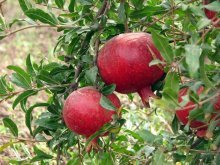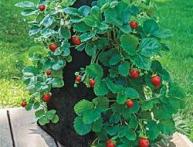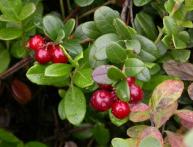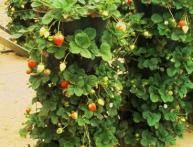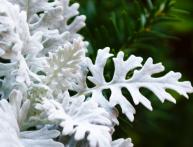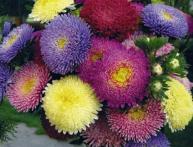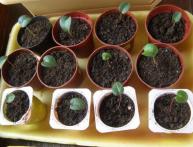How to grow pomegranate from a seed at home: collecting and preparing seeds for planting
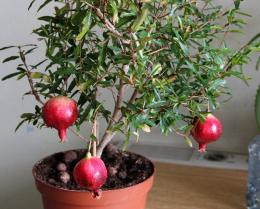
Pomegranate grown indoors will delight you not only with beautiful flowers, but also with exotic fruits. Even a novice florist can cope. Pomegranate is usually propagated cuttings or bones. The second method is simpler and you can select planting material from a purchased pomegranate. How to grow pomegranate on a windowsill?
Content:
- Collection of planting material
- Preparing seeds for planting
- What should the soil be like?
- Landing Features
- Pomegranate care
Collection of planting material
Seeds for cultivation can be selected when purchasing a fruit at the market or in a store. The pomegranate should be large and of a rich reddish hue. If the fruits are rotten, the seeds will not germinate well.
Ripe seeds white or cream-colored, hard and smooth to the touch. If they are soft and green in color, then they are not suitable for planting. When purchasing seed material, you also need to pay attention to their quality.
The packaging must include: name of the variety, company address, logo, expiration date, batch number, seed weight. You should not purchase seeds from strangers on the market. It is better to buy in specialized stores. It should be remembered that the yield is influenced not only by the quality of the seeds, but also by the correct growing conditions and care.
Preparing seeds for planting
Before planting, the seeds must be cleared of pulp and washed well.If some of the pulp remains on them, the seeds will become moldy. First, you need to soak the peeled seeds. Pour water into a small saucer and add a few drops of Epin solution and add the seeds. Instead of Epin, you can use Zircon solution.
This procedure stimulates the seeds to germinate. At the same time, they should be located halfway in the water. Leave them in this state for 12 hours. It is not recommended to completely close the saucer; oxygen must flow to the seeds. All this time it is necessary to monitor the water in the container.
If it evaporates, you definitely need to add more. Otherwise, the seeds will dry out and the shell will crack. The container should be kept in a cool place, avoiding drafts.
What should the soil be like?
This exotic soil can grow in almost any soil. A special substrate can be purchased at a garden store and prepared yourself. To plant pomegranate seeds, you can use peat and coarse river sand in equal quantities.
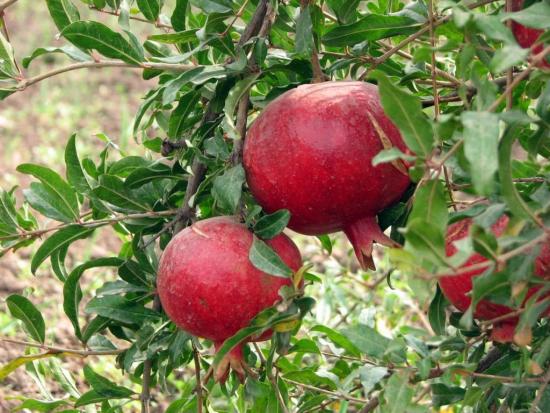
The sand should first be doused with boiling water. Instead of peat, you can use turf and humus. Mix these two components and add river sand before planting. It is an excellent source of minerals and will keep the soil loose and soft.
Landing Features
It is advisable to plant pomegranate seeds in a clay container. Place a drainage layer on the bottom and fill the pot with substrate. Next, make several indentations of 1-1.5 cm and moisten the soil. Spread the seeds and sprinkle with soil, but do not compact them.
After this, sprinkle lightly with water and cover the container with cling film. For quick germination of seeds, it is recommended to place the pot in a warm and dry place.It is important not to forget to open the film from time to time and ventilate the sprouts. They must be watered and ensure that the substrate is not too wet.
With proper preparation of seeds and soil for landings germination rate is quite high. Some seeds may hatch within a week, while others may take a month or more to hatch. The film is removed after the first leaves appear. At this moment, picking is carried out into separate pots. It is better to plant in winter so that sprouts appear by spring.
Pomegranate care
Pomegranate is easy to care for. It is advisable to place the pot on the south side, where there is enough light and warmth, but it is better to protect the plant from bright sunlight. In summer, the pomegranate tree can be taken out to the balcony for fresh air. If there is not enough light, the leaves will become sparse and the plant will grow tall. You need to water pomegranate at least 4-5 times in summer, and reduce it to 2 times in winter.
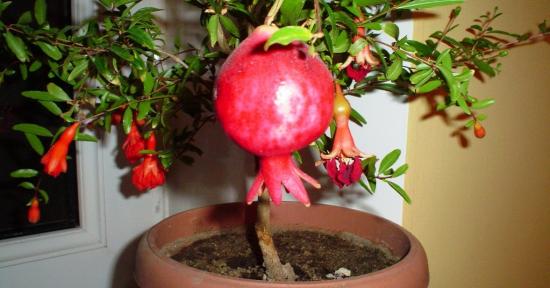
If necessary, you can use a spray bottle if the top layer of soil dries out quickly and the soil inside is moist. Warm water is used for irrigation. Fertilizers are applied in spring and summer. Should be fed every 2 weeks. Typically, liquid fertilizers intended for indoor plants are used.
You can also use organic fertilizers: manure, aquarium water. Immediately before feeding, the tree should be watered abundantly. Pomegranate needs pruning. This allows you to form a beautiful crown. The first pruning is carried out when four leaves appear on the tree.
Carefully pinch off the last leaves. After two branches grow, they are also cut off. Transplantation is carried out when the tree grows strongly.
When replanting, not only the container is changed, but also the soil. The procedure is recommended to be carried out once every three years in the spring. It should be noted that a pomegranate tree that is grown from a seed only blooms, and it is recommended to graft it to produce fruit. Pomegranate has the ability to shed leaves. This usually starts in late November and early December.
When the latter falls off, you need to take the pot to a cool room. During flowering, you can pollinate the plants using a brush or cotton swab. It is quite possible that several fruits will appear by autumn. Like other plants, pomegranate is also susceptible diseases.
They usually develop due to improper care. Most often, pomegranates are attacked by spider mites, pomegranate codling moths, and aphids. It is necessary to regularly inspect the pomegranate tree, wipe the leaves, and do not over-moisten the soil. These activities will help you grow a pomegranate tree at home without difficulty.
Video on how to grow pomegranate at home:

